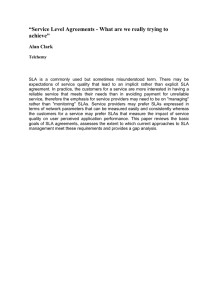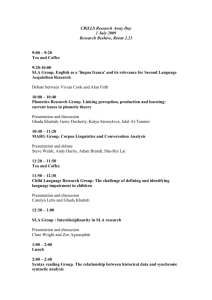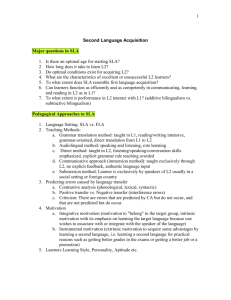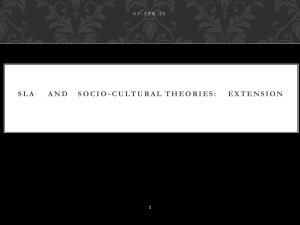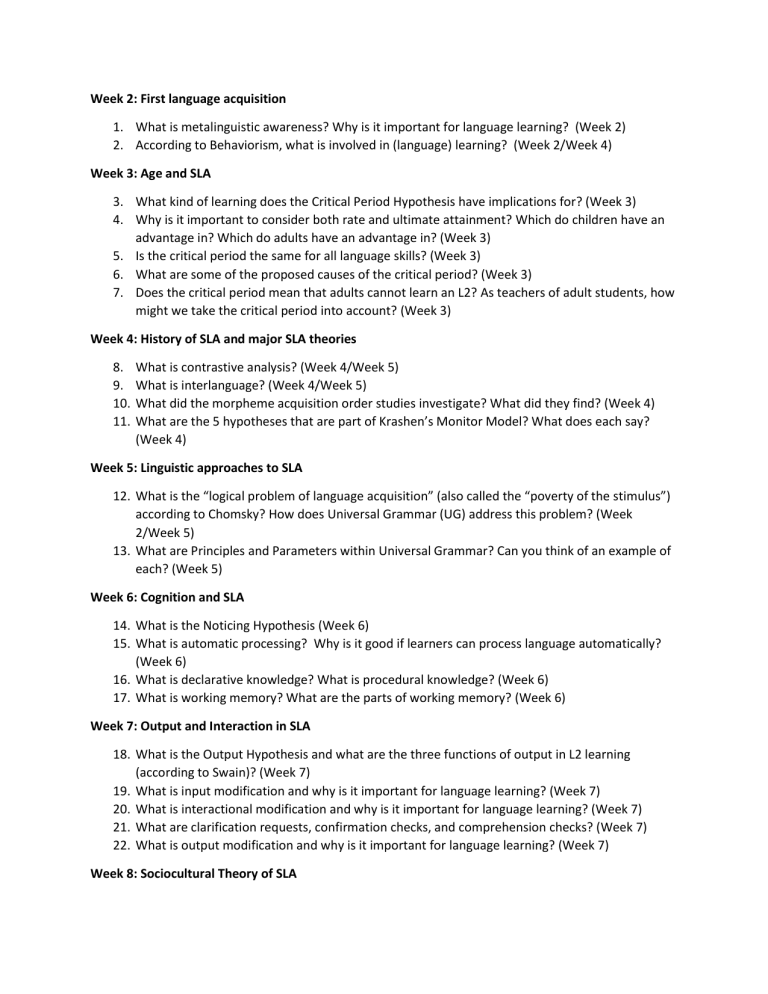
Week 2: First language acquisition 1. What is metalinguistic awareness? Why is it important for language learning? (Week 2) 2. According to Behaviorism, what is involved in (language) learning? (Week 2/Week 4) Week 3: Age and SLA 3. What kind of learning does the Critical Period Hypothesis have implications for? (Week 3) 4. Why is it important to consider both rate and ultimate attainment? Which do children have an advantage in? Which do adults have an advantage in? (Week 3) 5. Is the critical period the same for all language skills? (Week 3) 6. What are some of the proposed causes of the critical period? (Week 3) 7. Does the critical period mean that adults cannot learn an L2? As teachers of adult students, how might we take the critical period into account? (Week 3) Week 4: History of SLA and major SLA theories 8. 9. 10. 11. What is contrastive analysis? (Week 4/Week 5) What is interlanguage? (Week 4/Week 5) What did the morpheme acquisition order studies investigate? What did they find? (Week 4) What are the 5 hypotheses that are part of Krashen’s Monitor Model? What does each say? (Week 4) Week 5: Linguistic approaches to SLA 12. What is the “logical problem of language acquisition” (also called the “poverty of the stimulus”) according to Chomsky? How does Universal Grammar (UG) address this problem? (Week 2/Week 5) 13. What are Principles and Parameters within Universal Grammar? Can you think of an example of each? (Week 5) Week 6: Cognition and SLA 14. What is the Noticing Hypothesis (Week 6) 15. What is automatic processing? Why is it good if learners can process language automatically? (Week 6) 16. What is declarative knowledge? What is procedural knowledge? (Week 6) 17. What is working memory? What are the parts of working memory? (Week 6) Week 7: Output and Interaction in SLA 18. What is the Output Hypothesis and what are the three functions of output in L2 learning (according to Swain)? (Week 7) 19. What is input modification and why is it important for language learning? (Week 7) 20. What is interactional modification and why is it important for language learning? (Week 7) 21. What are clarification requests, confirmation checks, and comprehension checks? (Week 7) 22. What is output modification and why is it important for language learning? (Week 7) Week 8: Sociocultural Theory of SLA 23. What is the difference between a cognitive perspective on interaction and a sociocultural perspective on interaction? (Week 8) 24. What is mediation in Sociocultural Theory? (Week 8) 25. What is the Zone of Proximal Development? (Week 8) 26. What is “Languaging”? (Week 8) Week 9: Individual differences 1: Aptitude and intelligence 27. What are individual differences? (Week 9) 28. What does the MLAT measure? (Week 9) 29. What components is language learning aptitude thought to have? (Week 9) Week 10: Individual differences 2: Motivation 30. In the Socio-Educational Model of motivation, what are integrative orientation and instrumental orientation to motivation? (Week 10) 31. What is Expectancy Value Theory of motivation? (Week 10) 32. In the Self-Determination Theory of motivation, what are intrinsic motivation and extrinsic motivation? (Week 10) 33. In the L2 Motivational Self System theory of motivation, what is the “Ideal L2 Self”? (Week 10) Week 11: Individual differences 3: Anxiety, personality, and WTC 34. 35. 36. 37. How are extraversion and introversion related to language learning? (Week 11) What is Tolerance of Ambiguity and how is it related to language learning? (Week 11) What is L2 Grit? (Week 11) What is Willingness to Communicate? (Week 11) Week 12: Observing learning and teaching 38. What are pros and cons of learning an L2 in a naturalistic setting? (Week 12) 39. What are pros and cons of learning an L2 in a structure-based instructional setting? (Week 12) 40. What are pros and cons of learning an L2 in a communicative instructional setting? (Week 12)
